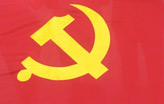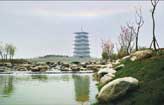Economy
Say hello to hi panda
Updated: 2011-07-08 11:09
By Zhang Xi (China Daily European Weekly)
 |
|
Hi Panda has morphed from artwork into a hot commodity in the fashion world. The apparel line can be found in Europe and China, and will be launched in North America next year. Provided to China Daily |
An unusual panda is the rising star in Europe's fashion circles
What if a panda were no longer cute and adorable? Apparently, a grumpy panda can still be popular, possibly even more popular than its charmingly naive-looking counterpart. An angry, but oddly endearing panda is the icon for a Chinese clothing line named Hi Panda. The motif appears on hooded sweatshirts, T-shirts and jeans, and has attracted attention from the international fashion scene.
The scowling, "evil" panda, and his equally grumpy fiancee, are pictured driving a sports car, playing basketball and eating noodles. The simple images are reflections of the post-80s pop-art generation of China and young people all over the world, according to its creator Jiji, who goes by one name.
"I was inspired by the youth culture and streetwear style. The panda depicts young people's thoughts and expressions," says the Chinese-born artist who is based in Shanghai. "They are rebellious, independent and willing to be distinguished from others."
The Hi Panda line can be found in 43 retail stores in shopping centers across Europe, including Citadium, Galeries Lafayette and Le Bon Marche in Paris, Harvey Nichols in London, and in nearly 50 stores in China. "We also have a boutique in Paris and plan to open a new one in downtown London this year," he says. "Our goal in 2012 is to explore North America."
The first iteration of the panda came in the form of a sculpture in 2000. A collection of artwork was shown in international exhibitions from 2003 to 2004. But it wasn't until the 2008 "China Design Now" exhibition, held in Victoria & Albert Museum in London, that the mostly black-and-white illustrations captured the attention of many in the upper echelons of the fashion world.
The head of communications at Louis Vuitton, Antoine Arnault, who is also the son of LVMH chairman and CEO Bernard Arnault, was intrigued by the panda.
The younger Arnault is a co-owner of Hi Panda and is helping promote the brand in Europe.
Even Anna Wintour, editor-in-chief of Vogue magazine, has been seen wearing the Hi Panda emblem.
"I contribute my current success to right timing and right direction," Jiji says. "My panda sculptures attracted the attention of Western fashion icons in 2008 because of the lack of new artwork there caused by the economic turmoil. Also, foreign customers love my panda since it is the symbol of China."
Jiji has strategically combined art and apparel. The artist-turned businessman, who earned a bachelor's degree in industrial design from Shanghai Jiao Tong University in 1994, does not think they are totally different businesses. "I believe the art and the clothing line can benefit from each other. The clothing line isn't more popular than my artwork of the panda, or vice versa," he says.
The ambitious Jiji hasn't stopped with the clothing line. He has opened a gallery in Shanghai, released albums for Chinese hip-hop singers and held art exhibitions for Chinese artists. All of them, according to Jiji, are a platform for Chinese youths to express themselves. "I hope to produce a hip-hop concert for domestic singers this year," he says.
"The strategy of appealing to the art communities in London and Paris was brilliant," says Keith Niedermeier, director of the undergraduate marketing program and adjunct assistant professor of marketing of the Wharton School at the University of Pennsylvania. "It helped create an icon of the evil panda that led to apparel sales and a broader appeal. Additionally, the panda motif helps the brand be identified as uniquely Chinese."
The price of a Hi Panda T-shirt ranges between 200 yuan (21.5 euros) and 400 yuan in China. And Jiji expects the prices to rise, just as its status in the fashion world.
"Prices of clothes by Nike and adidas are among the same range, which has attracted many Chinese youths. Our brand is aimed at people between the ages of 15 and 25 who are willing to spend money on branded clothes, even if the cost accounts for a large amount of their monthly incomes," Jiji says.
According to the 39-year-old, it is the modern design and high quality of Hi Panda products that led to the brand's popularity. "We kept the initial idea of representing Chinese youths, which is welcomed by people at home and abroad. The number of our stores is increasing at the speed of 100 percent after the brand launch in 2009," Jiji says. "The goal to get more than 100 million yuan in revenue in 2011 will be very easy to achieve." He wouldn't specify how much money the company has made since its inception.
"It is certainly a trend for Chinese brands to enter foreign markets, since young people like clothes embodying alien figures," says Paul Beamish, director of the Asian Management Institute at the Richard Ivey School of Business at the University of Western Ontario in Canada.
However, even though the brand is popular abroad, it may not gain the same status in China, at least in the opinion of Sun Yimin, associate dean of the School of Management at Fudan University in Shanghai.
"It is true that youths in every country like foreign stuff, so the panda is welcomed in Western countries as a representation of China. But Chinese people may ignore this symbol because they have seen and heard of pandas for a long time," she says. "The brand may not become very famous in China."
But she also admits it is good for Chinese brands with unique designs and of good quality to land on foreign docks. "What it needs is courage and funding," Sun says.
China is the powerhouse of apparel exports, which reached $129.48 billion (90 billion euros) in 2010, 20.9 percent higher than in 2009. But, for many Westerners, China is still considered the world's factory rather than a home for innovative design.
This made-in-China association is a barrier for Chinese brands, says Niedermeier. "Designed-in-China is clearly the next logical step for Chinese firms after made-in-China."
"China has many creative designers who will eventually make the world take notice. Firms in China are beginning to really understand the power of brands. The Chinese love brands, but these have been largely American and European. The time has come for Chinese brands to emerge," he says.
Chinese-American designers such as Vivienne Lam, Anna Sui, Vera Wang and Jason Wu are all popular among Western world. Their brands are well accepted overseas.
"The world will undoubtedly begin to see and accept brands that are uniquely Chinese. I believe this brand (Hi Panda) will help pave the way for many other Chinese brands to break through in the West as well as prosper in their home market," he adds.
Jiji has a clear direction in his mind. He would like the number of stores selling his line to reach 100 this year. He also emphasizes that the development should be controlled since the company's first priority for the brand is quality, not just fame. "It is very important for us to protect the frail Chinese brand," he says. "We have to walk step by step."

Specials

90th anniversary of the CPC
The Party has been leading the country and people to prosperity.

My China story
Foreign readers are invited to share your China stories.

Green makeover
Cleanup of Xi'an wasteland pays off for ancient city